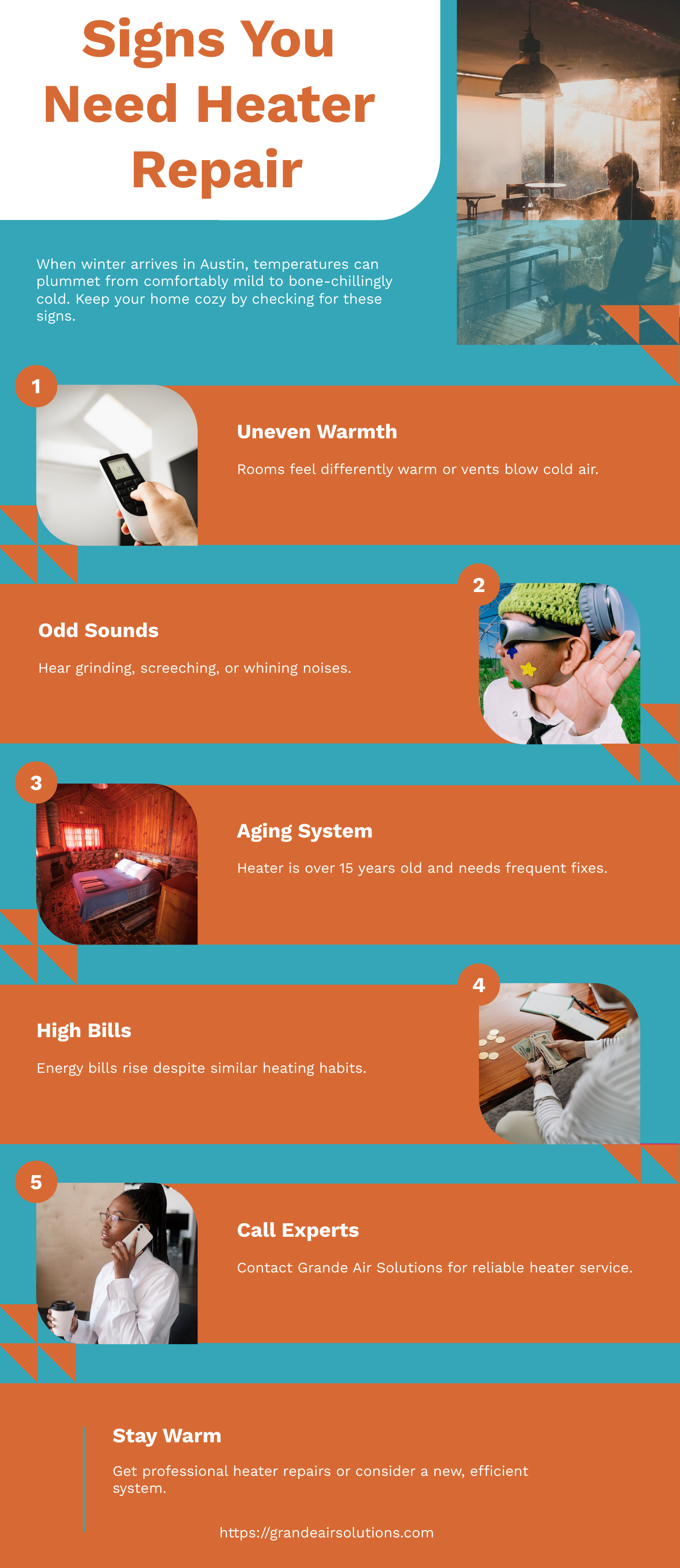
When winter arrives in Austin, temperatures can plummet from comfortably mild to bone-chillingly cold. As any longtime Texan knows, our heating systems are essential for keeping homes comfortable and safe during this seasonal cold snap.
However, furnaces, heat pumps, and boilers don't always operate perfectly year after year. At some point, every heating system experiences mechanical problems or breakdowns that require professional repair. When your heater stops working properly, you need prompt service from qualified technicians to restore safe heating as quickly as possible.
This guide covers everything homeowners need to know about heating system repair - from recognizing issues to finding a reputable local company. Don't get left shivering this winter! Proper heater maintenance and repair saves energy, money, and restores comfort.
Attempting DIY heater repair might seem like an easy way to save money upfront. But for most heating system models and complex issues, professional repair is the only way to ensure safety and long-term reliability.
Licensed HVAC repair technicians bring extensive training and expertise to properly diagnose and fix heating problems using manufacturer-approved methods. Their thorough diagnostics accurately identify the root cause of issues rather than just treating symptoms. This prevents repeated breakdowns and keeps systems operating at peak efficiency.
Only certified professionals should handle many key heater components like gas valves, ignition systems, heat exchangers, and refrigerant lines. Improper work on these areas creates dangerous safety hazards for equipment and home occupants. Legitimate heating repair companies also stay updated on the latest code requirements for all work performed.
In addition to fixing acute problems, ongoing professional maintenance from skilled HVAC technicians extends system lifespan while stopping minor issues from escalating into costly replacements down the road. Most reputable heating contractors offer service plans providing routine inspections and tune-ups to keep systems working their best.
Even with proper maintenance, all heating systems eventually run into problems requiring professional repair. Some of the most frequent issues include:
If the system won't turn on, runs constantly, or doesn't reach set temperatures, a faulty thermostat is likely to blame. Thermostats act as the control center and require expert calibration or replacement.
For forced-air systems, blocked vents, ductwork leaks, or built-up debris around the blower can severely restrict air flow. This causes uneven heating and strain on components.
Cracked heat exchangers, broken ignitors, and issues with gas valves can all prevent a furnace or boiler from achieving safe ignition and operation.
Grinding, screeching, or whining noises often indicate a mechanical problem like failing motors or bearings. Any burning odors signal an issue that needs immediate attention.
When a heating system turns on and off rapidly without reaching desired temperatures, short cycling is occurring. This wastes energy while leaving homes inadequately heated.

| System Type | Average Lifespan |
| Furnace | 15-20 years |
| Air-Source Heat Pump | 15 years |
| Geothermal Heat Pump | 20-25 years |
| Boiler - Hot Water | 15-30 years |
| Boiler - Steam | 20-25 years |
